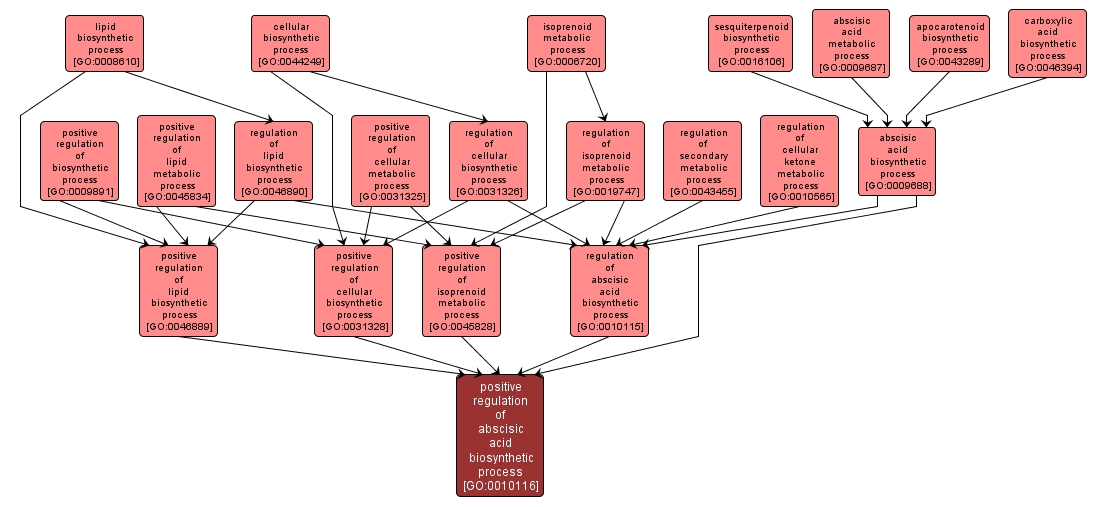GO TERM SUMMARY
|
| Name: |
positive regulation of abscisic acid biosynthetic process |
| Acc: |
GO:0010116 |
| Aspect: |
Biological Process |
| Desc: |
Any process that activates or increases the frequency, rate or extent of the chemical reactions and pathways resulting in the formation of abscisic acid. |
Synonyms:
- activation of abscisic acid biosynthetic process
- upregulation of abscisic acid biosynthetic process
- positive regulation of abscisic acid biosynthesis
- stimulation of abscisic acid biosynthetic process
- up regulation of abscisic acid biosynthetic process
- positive regulation of abscisic acid anabolism
- positive regulation of abscisic acid formation
- positive regulation of abscisic acid synthesis
- up-regulation of abscisic acid biosynthetic process
|














